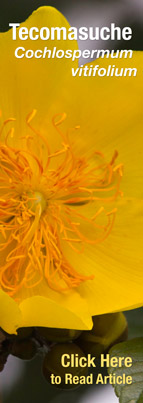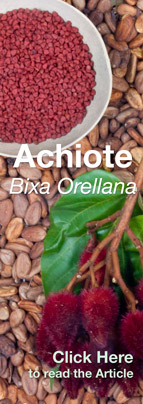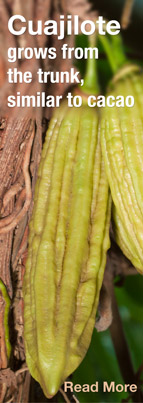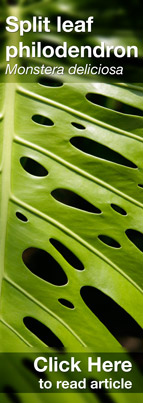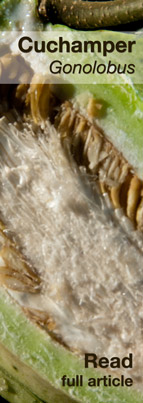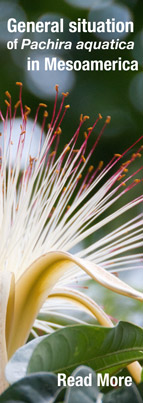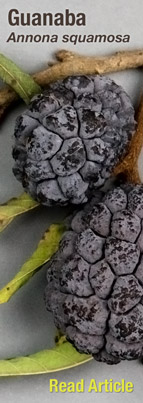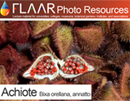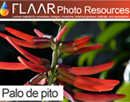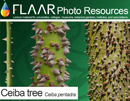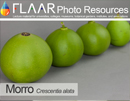When time and funding permit, each flower (each plant species) will have its own page, and its own PDF, and eventually its own PPT so that professors and students have plenty of material on Guatemala (and Honduras, etc) to study.
Heliconia adflexa, Coban, Guatemala, Hotel Monja Blanca, FLAAR, by Nicholas Hellmuth
This space is for flowers
we have recently found and photographed.
|
| Share
|
| Flor de Mayo, Plumeria rubia, Plumeria obtusa, frangipani, is a known sacred Maya flower, but deserves further study to understand claims of use as aphrodisiac |
Plumeria rubia, Flor de Mayo photos, in Guatemala, Mexico, and BelizeFlor de Mayo flowers are considered sacred, are used by some native people as flavor for cacao, by others as flavoring for alcoholic drinks. Flor de Mayo is considered as a potentially impactful aphrodisiac, due in large part to an alluring fragrance (later in this report I express my skepticism; I think it is another flower which has the fragrance needed). Although we do not undertake taste-test studies of these chemical aspects of plants, it definitely is something the pre-Columbian peoples would have been aware of. Flor de Mayo can be seen in gardens throughout Guatemala, but its natural habitat in Guatemala is from the cactus-covered deserts of El Rancho, El Progreso. The flower's name comes from the fact that the flower comes out especially during May, though of course this varies by the year (since weather may be different some years than other years). I have seen flor de Mayo still blooming in mid-June in Tikal, Chisec, and El Rancho areas. The lei flower of Hawaii, that every tourist is familiar with, is actually the same genus. So the Hawaiian lei originally comes from Mexico or Central America. Actually I see the Flor de Mayo in Singapore, Thailand, Vietnam, Dubai and many other places as I fly around the world to study digital imaging technology or to give lectures in foreign countries. So the flor de Mayo is a flower that has literally spread around the world, and has considerable potential as an exotic flavoring for beverages. So lets learn more about this flower. And most importantly, let’s be aware that Plumeria rubra is native to Guatemala, Mexico and adjacent countries. Elsewhere around the world this plant has been introduced. Species of flor de Mayo mentioned for Guatemala, Mexico, and Belize
I am not yet as familiar with two other species (many names may now be synonyms or only in other countries; so not native to Guatemala).
One English name is "May flower," usually spelled as one word, mayflower, but everyone in Guatemala of course calls it the flor de Mayo. Many Internet sites give the name as flor de la Cruz, and yes, many people in Guatemala call the flower by this name (but there are so many different cultural areas of Guatemala that maybe I need to go to the Highlands, or piedmont, to hear this other name). However when in Cahabon, Alta Verapaz, several local people used the name, Flor de la Cruz. 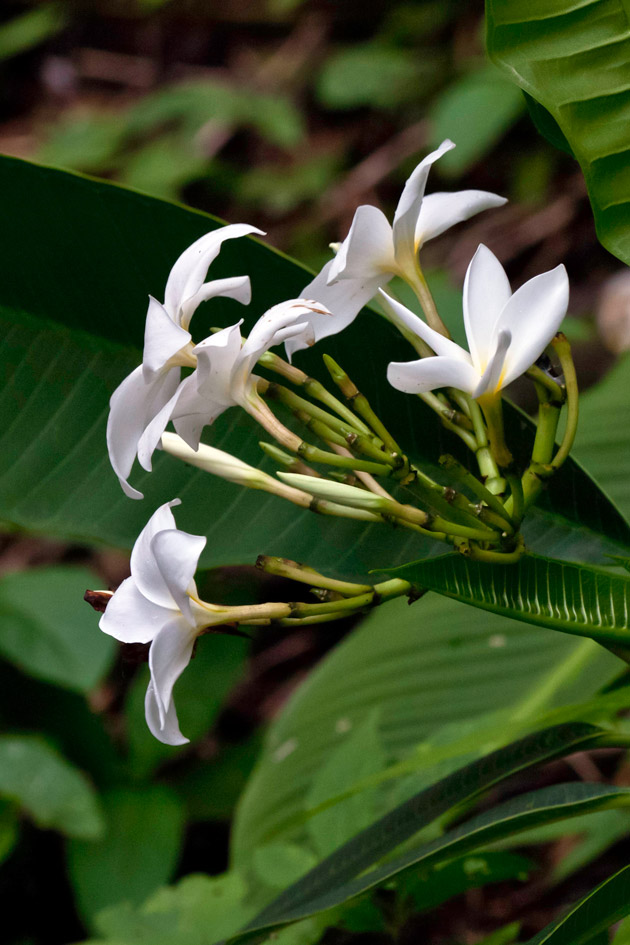
May flowers are known as flor de mayo in Guatemala. Photo by Nicholas Hellmuth using a Canon EOS-1Ds Mark III, May 2011. Notice how the white here is not overexposed. In most books on flowers published in the 1960's through 1990's, any flower which is white is simply burned out (meaning there is no detail because the white is too white; it is overexposed). To avoid this we use either HDR or simply expose and bracket. Then the graphic designers hold the detail without burning out the whites. This is our way of offering to botanists some suggestions for how to improve photography of flowers. The tree flowers primarily in May, but I have seen it flowering in various parts of Guatemala also in March and April. The white flower with a yellow center is what you tend to see in the wild. The size and shape of the flowers vary by local regional varieties. We have found tremendous variation in size, shape, and how much of the center is yellow. Red, magenta, pink, and totally yellow Plumeria flowers you tend to see in gardens. However we have found several pink-flowered trees in cacti-forests. We estimate they are from former house gardens, as far from any village, so far 100% of the Plumeria are white (with yellow centers). Peculiar aspects of flor de Mayo plumeria plantsPlumeria cuttings can easily be cut, transported and transplanted. Any branch is fine. Just stick the branch in the soil, and eventually it will sprout. About 30% rot, so you may want the cutting to dry out before sticking it in the ground. Mine were dormant for most of the year every year. But now (after four years!) at the start of the rainy season (not uncoincidentally, the month of Mayo, hence the name), my tree bursts out with fresh leaves. But in all four years, nary a flower or even a bud, though the fault may be that I provide it too much shade. I believe this tree likes full sun. So I cleared the area around the plant, to let sun in. Within a week it had finally sprouted abundant leaves and is very happy with all the sunshine. I see Plumeria trees before the Zacapa area of Guatemala, around El Rancho (department of El Progreso), a rather strange place to find any flower supposedly related to the Classic Maya. The Classic Maya lived in the humid Maya Lowlands; not out in the deserts of central Guatemala. The El Rancho area is dry dry dry; a cactus desert most of the year. Yet botany textbooks all state that this dry area is the native habitat of the white Flor de Mayo in Guatemala. Yet of course you can see other colors (introduced) at Tikal and in gardens in most of the rest of the Republic. The fact that this plant is known also as the Flor de la Cruz suggests it has religious significance. Plumeria is the national flower of Nicaragua and is associated with temples in several cultures in Asia (even though it was not native in those cultures). 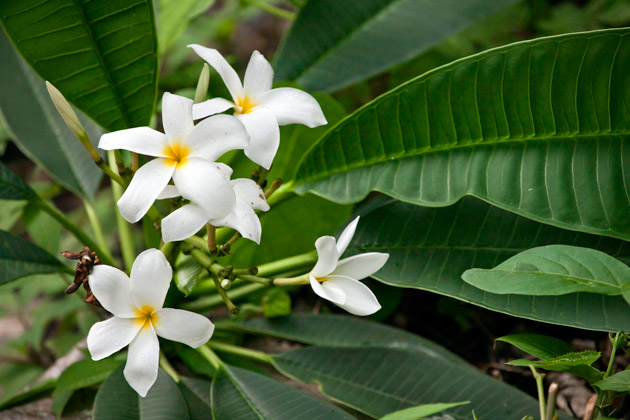
Plumerias come in many colors when hybrids, but in Guatemala I see mainly the white, the "yellow" (which is actually mostly white with yellow inside) and rose. Orange and lavender or pure red are not found out in the wild (in Guatemala).
Chilam Balam of ChumayelOne original Yucatec Maya way to name the flower is bac nikte, "white flower." This was clearly a flower, and linguistic term, with double entendre. The Maya were constantly using plays-on-words, so this is a great plant to study if you have an interest in Mayan linguistics. If you like Mayan puns, you can do a lot of study of the books of Chilam Balam. Chilam Balam had a "Katun of the Plumeria flower" (Roys 1933) as well as Plumeria flowers being used to express highly esoteric concepts that only a person with sophisticated knowledge of local customs would understand. A very helpful discussion of Nikte in the Chilam Balam is in an article by Ruth Gubler (2001:246-248). Just be aware that much, and in some articles, most, of what is written on the translations purporting to be Plumeria are totally incorrect. J. Eric S. Thompson is a good example of the utter nonsense which has been written on Plumeria (and then repeated every year even in peer-reviewed journals). Be wary of identifications of the Kin glyph with Flor de Mayo The Kin glyph has four petals. Plumeria rubia has five petals. So I do not accept that the Kin flower (sun) has much relationship, per se, with Plumeria rubia. Most mention of the Plumeria rubia, under a Mayan name, is with the Lacandon 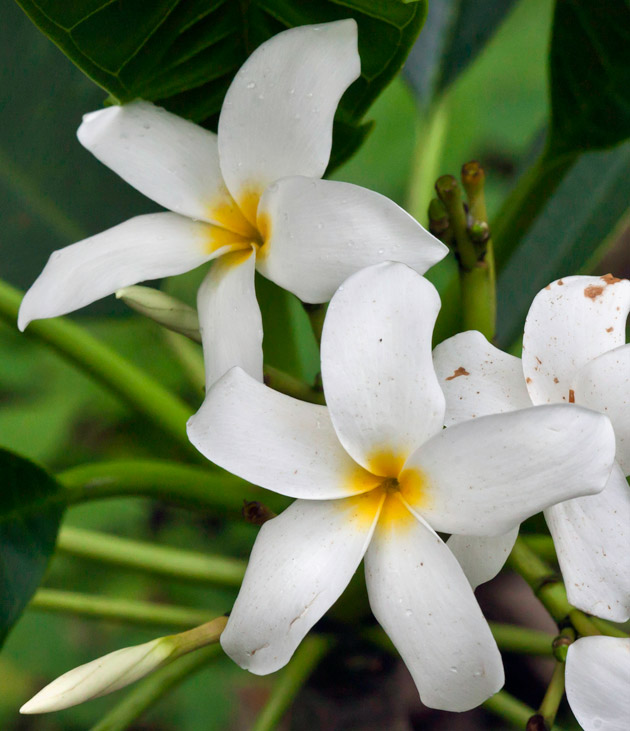
Plumerias have five petals, the Kin glyph has four. FLAAR image archive, photographed by Nicholas Hellmuth using a Canon EOS-1Ds Mark III, May 2011. Tozzer is actually one of the first to point out the Plumeria flowers as birth parents of the first Lacandon gods (Tozzer 1907:93, quoted by Roys 1933). See Roys Ethno-botany p. 306. I am increasingly skeptical of Plumeria flowers as being the actual "Sac Nicte" or Bac Nikte'" of legends. I am also skeptical of the flower having a fragrance enough to serve as an aphrodisiac. I believe the correct flower is one of the narrow tubular-shaped flowers which is especially fragrant in the evening (like huele de noche, but another different species). A majority of the books on the Lacandon state bac nikte' is Plumeria species (McGee 1990:60 is but one example). But it is never clear whether they are simply copying that everyone else before them says. Be wary of constant attempts to find parallels between Lacandon beliefs and Palenque There are several other systematic issues with several publications on the Lacandon: they keep using parallels between the iconography of Palenque and Yaxchilan to attempt to interpret Lacandon beliefs. J. Eric S. Thompson was the main source of the totally incorrect claim of Plumeria and the Kin symbol. Most mention of the Plumeria rubia, under a Mayan name, is with the Lacandon Maya of Chiapas. But in about half the articles and monographs, the same misinterpretations are repeated over and over again. 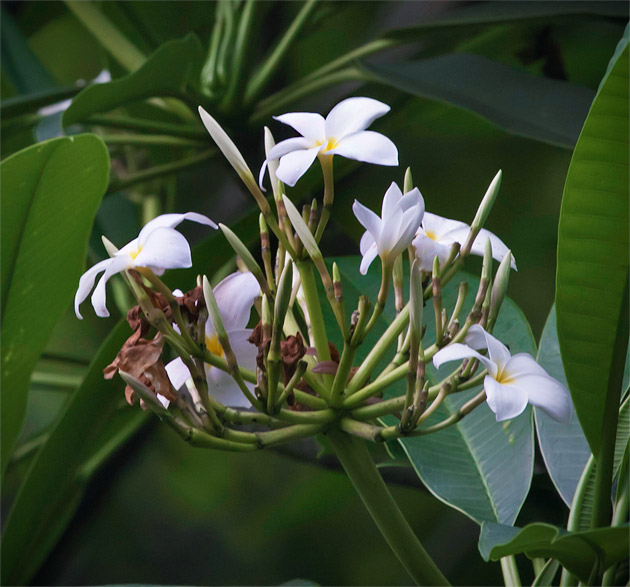
Plumeria obtusa flower buds and open flowers. Photo by Nicholas Hellmuth using a Canon EOS-1Ds Mark III, May 2011. The 17th century Cholti Lacandon perhaps were more likely descendants of Chol-speaking groups, but not the Yucatec-speaking Lacandon. The Yucatec Lacandon do indeed worship at Palenque and Yaxchilan in the last century since these ruins are nearby. But I see no evidence that the Yucatec Lacandon are whatever the actual descendants of the Palenque or Yaxchilan Maya It makes no difference how many similarities can be conjured up; at best these would be pan-Maya beliefs. Besides, the Lacandon are clever enough to develop a few ties to Palenque and Yaxchilan. In order to be polite I will discretely not mention the articles that promote the Lacandon as being "Palenquenos" or "Yaxchilanenos" (fortunately none used such ridiculous terms). I have to joke, as otherwise I am simply incredulous how anyone can have missed the fact that the original inhabitants more likely spoke a Chol-related language. Yet some scholars have been swayed by wishful-thinking about the modern Lacandon. Lacandon beliefs are acceptably Maya, just not of Palenque! Sweet scent of plumeria flowers I must admit that I am so smitten by the enticing odor of huele de noche (that began to bloom this year in my own ethnobotany garden) and datura (that I smell in a nursery in Antigua, Guatemala) that I have frankly not noticed any particular fragrance of Plumeria species. Perhaps it is because I do my photography during the day and the scent is most sensually attractive at night. 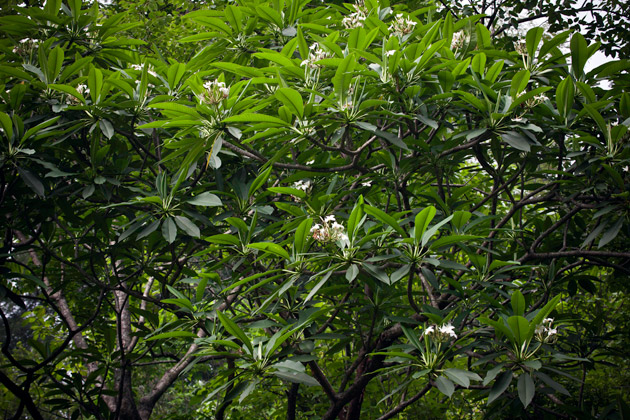
Plumeria obtusa tree flowering. Photo by Nicholas Hellmuth using a Canon EOS-1Ds Mark III, May 2011. Also Flor de Mayo needs full sun, and my garden is too shaded, plus 1500 meters elevation seems not to be their ideal habitat. But as soon as I can be near a Flor de Mayo at night, I will check to see if it has a sweet alluring fragrance. Plumeria flowers as flavoring for cacao; and for alcoholic balche One web page claims in Oaxaca you can see the "Bu'pu drink made of foamed cacao and plumeria flowers…" Love potion of plumeria flower Cacao has long been declared to be an aphrodisiac. Yet even dark cacao does not particularly vary interest or ability. So I have long estimated that it is not the cacao that kept the Aztec emperor capable of servicing endless nubile maidens, but it was other ingredients added to the cacao. Whether the other ingredient(s) was a catalyst or worked by itself (with cacao as only the cover, so to speak) is immaterial if in fact xxx-flavored cacao did the job! In fact the ingredients for cacao were some of the most potent chemicals available to the Maya people. Charles Zidar lists zopilote as a "Maya name" for Plumeria obtusa Botanist Charles Zidar has noticed that zopilote (vulture) is used as a name for Plumeria obtusa (Zidar's excellent list of flowers in the world of the Maya is on-line). Zopilote is used for several other plants in Mexico: Coragyps atratus and Swietenia humilis (sinat, Semarnat, Mexican government, on-line) and for Gyrocarpus jatrophifolius (Gamaliel Suarez Camacho, University of Michoacan, Mexico; on-line). Further studies needed on plumeria, Flor de Mayo 1st, more research into when Nicte means generic flower and when it means specifically Flor de Mayo. Roys states in a footnote: "Nicté. A rose, or a flower, not indicating from what tree, bush or plant." In other words, Nikte may be (sometimes) a generic meaning for flower; and not always plumeria. An entire thesis could be devoted to the concept of nicte (nikte and comparable), as several flowers are referred to by this set of words. This could include a study of the legend of Princess Sac Nicte. It would also be helpful if botanists could ascertain clearly how many colors of Plumeria species were available in pre-Columbian Mesoamerica. 2nd, the chemical properties of Plumeria needs to be studied by appropriate lab to determine if it is an aphrodisiac if you consume it, or whether it has to be consumed together with other ingredients to produce the desired results. I am not yet convinced that Plumeria is really the ingredient stipulated. More likely it is one or more of the many other flowers used to "flavor" cacao drink. 3rd, the chemical properties of Plumeria should be studied to see how it affects an alcoholic beverage such as balche. Is it a flavor for balche? Or does the Plumeria additive provide an effect of some kind? 4th, would be helpful if archaeologists could detect presence of Plumeria residue in vases or drinking cups or bowls. 5th, iconographers, with ethnobotanists, should determine why, if the plumeria flower is as "tasty" as suggested, and is so important in the Chilam Balam, why this flower is not more frequently depicted in Classic Maya art. And while on this subject, be very careful not to claim that flowers in glyphs with four petals are the flor de Mayo. The true flor de Maya has five petals and a very distinctive shape, and overlapping of the lower third of these petals. 6th, list, accurately what kinds of eco-systems flor de Mayo occurs in (other than desert-like El Rancho, Guatemala. For example, in Belize it is listed as occurring in seasonally dry areas such as akalche or tinta (www.elaw.org/system/files/Chapter+4-BNE-Flora+and+Fauna.pdf 4-4). 7th, study the Aztec beliefs and customs with relation to this plant, normally spelled cacalloxochitl or sometimes cacalosuchil. 8th. It is crucial to understand why the plant is called zopilote (vulture) in Belize. In most of these thesis topics, it is essential to include a total awareness of the botanical, ethnobotanical, and mythical aspects of flor de nardo, aak'alyoom, and Cestrum nocturnum L. and Polianthes tuberosa. Brief bibliography My comments in 1988 would today in 2012 be tempered by 23 additional years of experience in iconography and botany.Because the flowers are valued as garden plants there are several monographs on Plumeria. But so far I have not found any major discussion of Mayan ethnobotany in these gardening books, so below I mention only a few titles. Our more exhaustive bibliography of sacred flowers in Mayan epigraphy, ethnobotany, and archaeology is in our annual report, now in it's 12th edition.
Most recently updated May 30, 2016. Previously updated updated July 2, 2012. First June 25, 2012 |
Parque Nacional Yaxha, Nakum and Naranjo
Carnivorous Plants
Plants of Municipio de Livingston, Izabal
- Acrostichum danaeifolium, giant leather ferns
- Bellucia Pentamera
- Bibliography on Grias cauliflora
- Bibliography on Licania platypus
- Bibliography on Mangle negro (Avicennia germinans) L.
- Bibliography on Montriacardia arborescens
- Bibliography on Typha domingensis and Thypha latifolia
- Conocarpus erectus, white mangrove
- Edible Wetlands Plants, Hotel Tortugal
- Heliconia latispatha
- Heliconia wagneriana
- Manicaria saccifera Confra palm
- Neotropical trees of Guatemala need protection
- Nymphoides indica, waterlily flowers
- Pachira aquatica, zapoton
- Bibliography on Pithecellobium Mart., Neotropical trees of Mesoamerica
Ecosystems, Wetlands Aquatic Plants
Smartphone Camera Reviews
Bushes and small trees
Fungi and Lichens
Orchids
- Bibliography Bletia purpurea, aquatic orchid
- Bibliography, Epidendrum radicans
- Bibliography on Habenaria Orchids from Yaxha
- Bibliography, Lycaste virginalis var. alba.
- Bibliography, Macroclinium bicolor
- Bibliography, Prosthechea cochleata
- Bibliography Sobralia macrantha, Lirio de San Juan
- Bibliography, Sobralia xantholeuca
- Bibliography on Terrestrial shade orchids from Guatemala
- Bibliography on Terrestrial sunny orchids from Guatemala
Botanical Terms
Maya and Aztec flavorings for cacao, cocoa, chocolate
- Achiote, Bixa orellana
- Bibliography on Achiote, Bixa orellana
- Bibliography on Esquisúchil, Bourreria huanita
- Bourreria huanita
- Cassia grandis, bucut
- Chile Chocolate
- Chile Chocolate (Capsicum annuum var accuminatum)
- Chiranthodendron pentadactylon
- Cymbopetalum penduliflorum
- Guazuma ulmifolia
- Haematoxylum brasiletto
- Piper auritum, hoja santa
- Piper species
- Quararibea funebris
- Sterculia apetala, castaño
- Tagetes sp., Marigold
- Talauma, a variant of Magnolia
- Vanilla orchid
- Virola and nutmeg
Cacao, cocoa, chocolate
Consulting cacao & Theobroma species
Tobacco Ingredients of Aztec & Maya
Trees of Mesoamerica
- Bibliography on Acacia dolichostachya, Wild tamarind
- Bibliography, Bellucia costaricensis
- Bibliography, Bucida buceras
- Bibliography on Coccoloba belizensis Standl.
- Bibliography on Cojoba sp. and Cojoba arborea
- Bibliography, Ficus.
- Bibliography on Haematoxylum campechianum and H. brasiletto
- Bibliography on Hibiscus pernambucensis
- Bibliography on Ipomea murucoides
- Bibliography on Lacmellea standleyi, lechemiel
- Bibliography on Leucaena leucocephala
- Bibliography on mangle rojo (Rhizophora mangle)
- Bibliography on Manzanillo, Alseis yucatanensis Standl.
- Bibliography on Matilisguate, Tabebuia rosea
- Mangrove swamp Trees
- Bibliography on Ruagea insignis
- Bibliography on Pterocarpus officinalis
Bombacaceae, Bombacoideae
Tropical Fruits of the Maya
- Avocado Hass
- Bibliography on Coloc, Talisia floresii
- Bibliography, Dichogamy of avocado species
- Bibliography on Guayo, Talisia olivaeformis
- Bibliography on Laetia thamnia, Bakelac
- Bibliography on Maracuyá, Passiflora quadrangularis L.
- Bibliography on Punica granatum L., Granada
- Cashew
- Cuajilote, Parmentiera aculeata
- Granada
- Guanabas and Annonas
- Guava, Guayaba, Psidium guajava L
- Introduction to Papaya
- Nance a fruit of prehispanic Guatemala
- Passion flowers and fruits
- Passion flower, giant fruit
- Talisia floresii, Sapindaceae
- Carica Papaya Bibliography
Tropical Nuts
Spices, condiments, food coloring
Medicinal Plants
- Aristolochia, The largest flower in Guatemala, Bibliography
- Asclepias curassavica, bibliography
- Bibliography on Ciricote, Cordia dodecandra
- Bibliography on Contrahierba, Dorstenia contrajerva
- Bibliography on Falso hibisco, Malvaviscus arboreus
- Bibliography on Huele de noche, Cestrum nocturnum
- Bibliography on Lirio araña, Hymenocallis littoralis
- Bibliography on Roble Prieto, Ehretia tinifolia
- Bibliography, Tithonia diversifolia
- Canak
- Calliandra general info
- Guava, Guayaba
- Magnolia and Taluma
- Mayan medicinal plants
- Piper
- Tecomasuche, Coclospermum vitifolium
- Bibliography on Sufricay, Malmea depressa
- Bibliography on Wigandia urens
Underutilized edible plants
Edible Plants of the Mayan World
- Acacia, subin, bullhorn acacia
- Bibliography, Annona muricata
- Bibliography, Annona purpurea
- Bibliography, Annona reticulata
- Bibliography on Chipilín, Crotalaria longirostrata
- Bibliography on Chirimoya, Annona squamosa
- Bernoullia flammea
- Canna indica, tamale wrap
- Cuchamper, Gonolobus
- Guava, Guayaba
- Bibliography, Gonobolus sp.
- Bibliography, Parmentiera aculeata
- Pacaya palm Chamaedorea tepejilote
- Split leaf philodendron, Monstera deliciosa
Plants and trees used to produce incense
Utilitarian Plants
- Bibliography, Acacia farnesiana
- Bibliography on Aechmea bromeliifolia
- Bibliography on Agave americana
- Bibliography, native Agave species from Guatemala
- Bibliography on Anthurium crassinervium (Jacq.) Schott
- Bibliography on Balsa, Ochroma pyramidale
- Bibliography on Bamboo, Guadua longifolia (E.Fourn) R.W.Pohl
- Bibliography, Crescentia alata
- Bibliography, Crescentia cujete
- Bibliography on Hule, Castilla elastica
- Blepharidium guatemalense, irayol blanco
- Crescentia alata, Crescentia cujete
- Tecomasuche, Coclospermum vitifolium
- Bibliography on Coxte, Colubrina arborescens
- Bibliography on Madre cacao, Gliricidia sepium
- Bibliography on Tillandsia usneoides
Flowers, edible
Camera Reviews for Photographing Flowers and Plants
Toxic plants
Trees with conical Spines
Flowers native to Guatemala visible now around the world
SUBJECTS TO BE COVERED DURING NEXT 6 MONTHS
Grains
Fruits (typical misnomer mishmash of Spanish language)
Other Fruits (primarily fruits from trees)
Fruits (vines or cacti)
Flavoring, herbs, and spices
Flowers, sacred
Plants which are sacred
Plants mentioned in myths
plants to produce Alcohol
Plants used for drugs
Plants or trees that are used to produce incense
Most common introduced plants (not native)
Glossaries


















